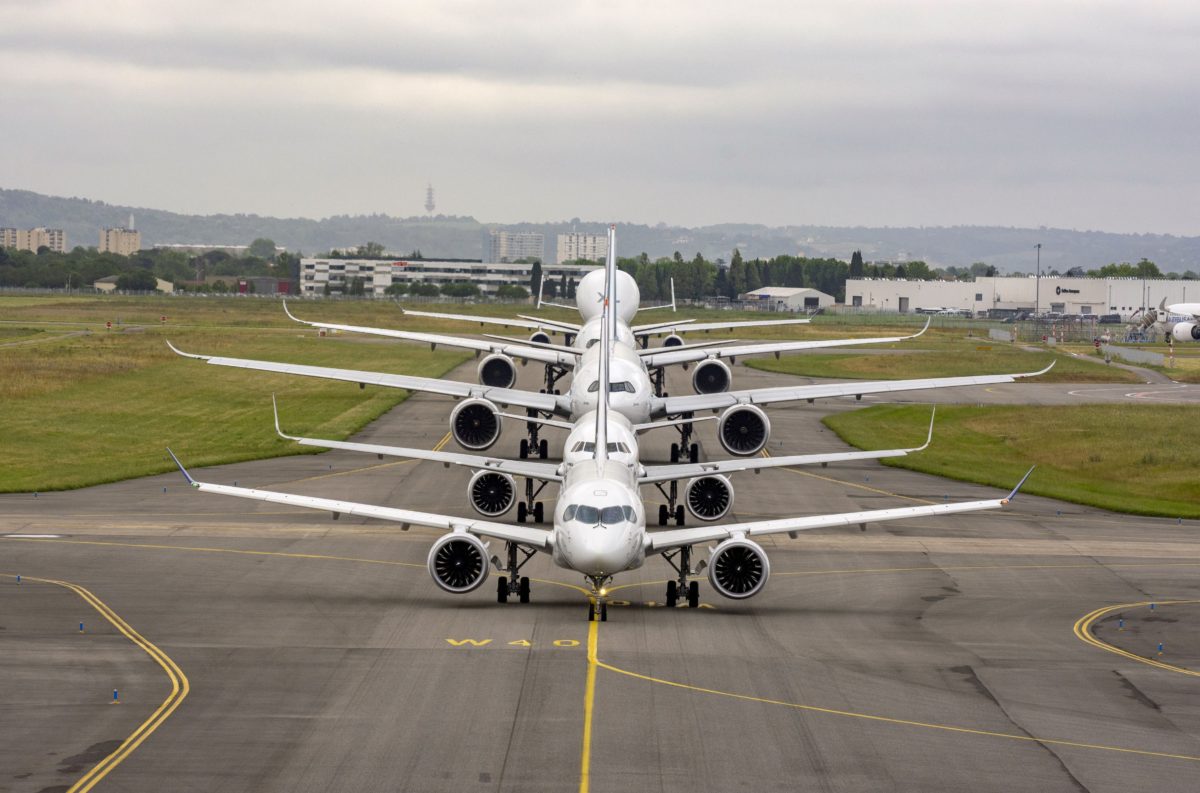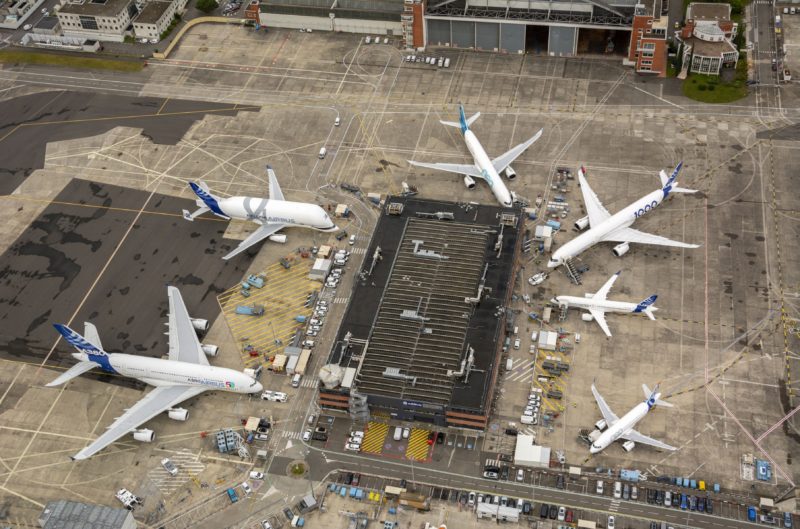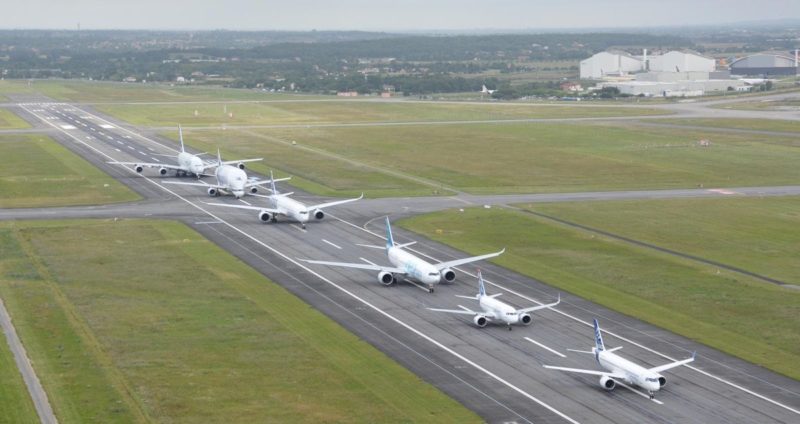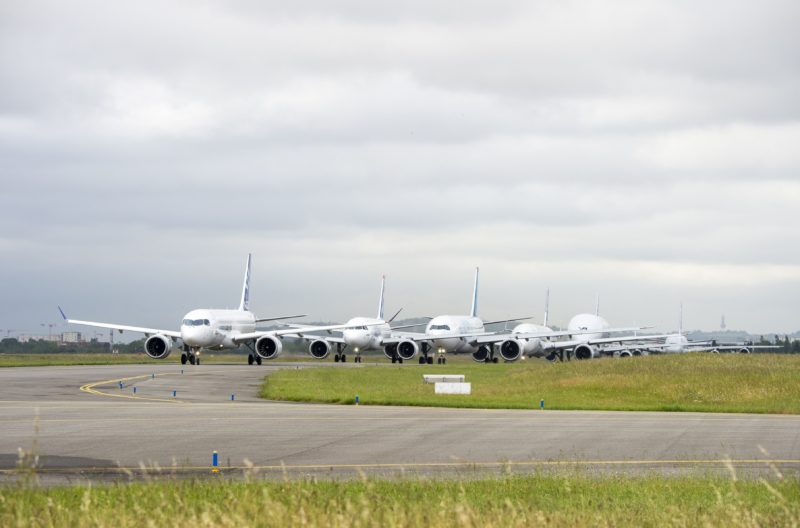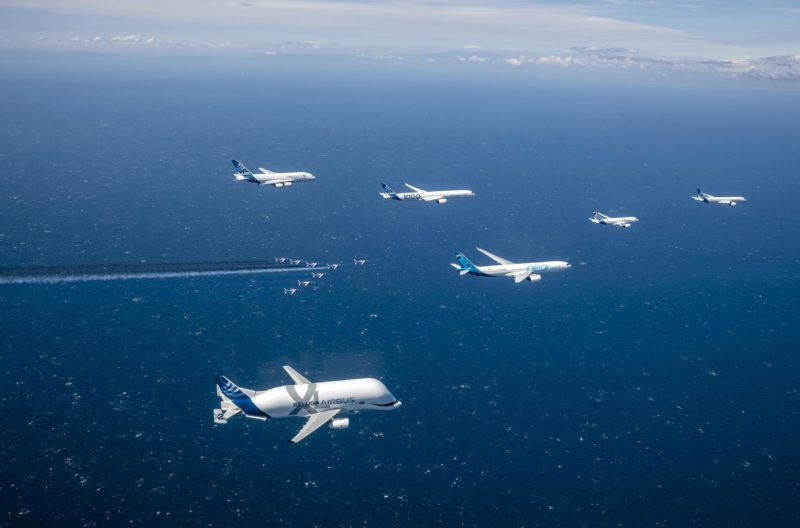50 years ago today, the French Prime Minister of Transport, Jean Chamant and the German Minister of Economic Affairs, Karl Schiller, signed an agreement in front of a large audience at the 1969 Paris Air Show for the joint-development of the world’s first twin-engine, widebody aircraft which became known as the A300.
To celebrate such an enormous milestone, Airbus has launched a company-wide campaign that will kick off today (29th of May) and last until the 17th of July that will see various celebrations take place.
However, the part we’ve all been looking forward to, the part we’ve all been teased about, the formation flight, is first!
Airbus sent up their entire family. That’s right! They’ve sent an A220, A319neo, A330neo, A350-1000, A380 and BelugaXL to fly in formation for a photo shoot.
All set to go ✅ Get ready for the #Airbus50 show! pic.twitter.com/ERccSyiNNG
— Airbus (@Airbus) May 29, 2019
Here are some fantastic images captured during the family departure sequence and formation flight:
Over the next 50 days, Airbus will be sharing a key moment of their company on their Airbus50 website. You can follow this here.
Joining the celebration is their largest competitor, U.S-based Boeing, who released a video congratulating Airbus, not only on behalf of their company but also an individual congratulations from their CEO, Dennis Muilenburg.
From all of us at Boeing, congratulations on 50 years, @Airbus. pic.twitter.com/1iQw10m5qe
— Dennis A. Muilenburg (@BoeingCEO) May 29, 2019
Just like all companies, Airbus has suffered many setbacks throughout its time, but with determination, cooperation and the global support behind it, they have managed to pull through.
A300: The “Airbus”
The 1960s was a time where many small European aircraft manufacturers struggled to get a firm grip of the market with their aircraft. It wasn’t until an idea formed in someones mind that the United Kingdom, France and West Germany would begin to collaborate on the development of a new aircraft.
Although the British elected to depart the project in 1969, the idea remained strong in the minds of the German and French, and on the 29th of May, 1969, an agreement between the two was signed.
Roughly one year later on the 18th of December, 1970, Airbus Industrie was officially born and the A300 was announced – the world’s first twin-engine, widebody aircraft.
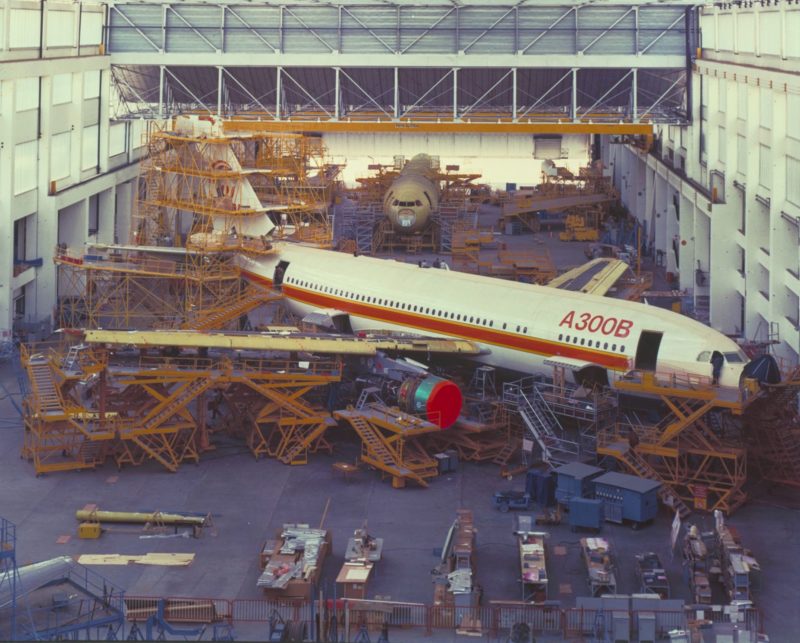
After bringing the best engineering minds together, learning from scale mistakes and taking in a wealth of new information, the first prototype A300 performed its maiden flight two years later
For a compilation of Airbus maiden flights, check out their video:
Fast forward five years, the aircraft became the first to receive ETOPS compliance thanks to its excellent safety and reliability.
Design wise, the aircraft was the first to make use of composite materials on a commercial aircraft, situated on primary and secondary structures.
To control the center of gravity, a system was developed that would see the aircraft automatically transfer fuel between various tank locations, optimizing performance and reducing fuel burn.
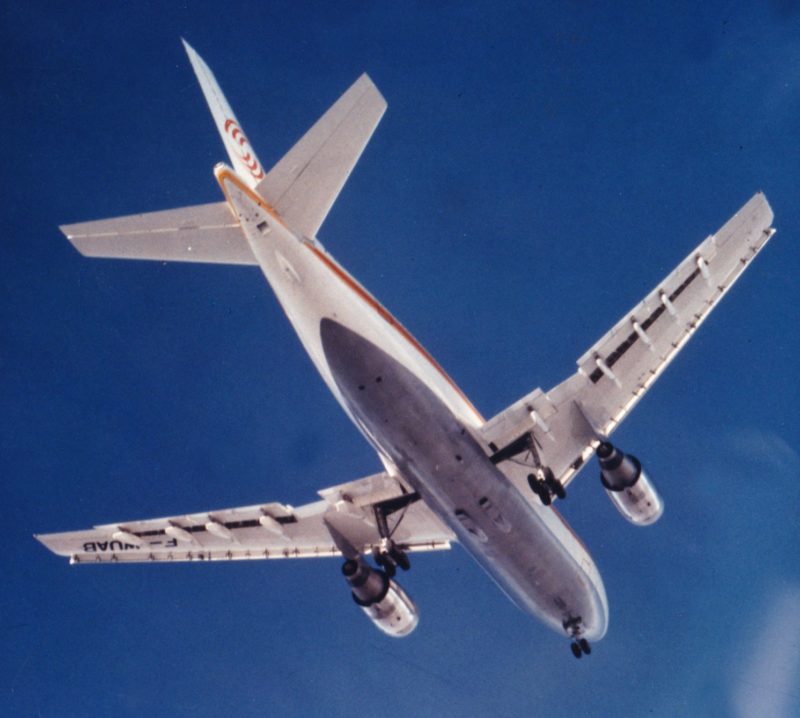
When it came to flight controls, the A300 relied on existing systems of cables and pulleys, however featured electronic secondary controls and electronic braking.
An advanced autopilot system also allowed the aircraft to fly by itself from climb-out to landing. Paired with the first use of windshear protection, the aircraft was a marvel of engineering and opened up a wealth of new potential for Airbus’ future ambitions.
Airbus concluded the A300 program with 820 orders in the book. What came next ultimately changed the aviation industry.
A320
With the BAC One-Eleven, 737-200 and DC-9 starting to show their age, Airbus began to investigate a new airliner. One that was ultra-efficient, debuted new technology and held 130-188 passengers.
On the 2nd of March 1984, with 96 orders, Airbus launched the A320 with little knowledge that it would become one of the world’s best selling commercial aircraft.
Performing its maiden flight on the 22nd of February, 1987, eight days after roll out, the aircraft remained in the air for 3 hours and 23 minutes. After 1200 hours of testing, 530 flights and some painful moments, the aircraft was certified, with the first example delivered to Air France on the 28th of March 1988.
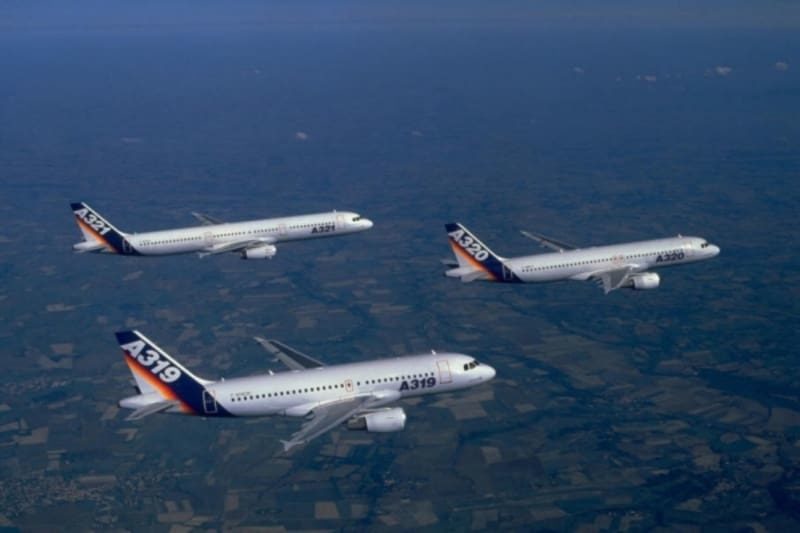
The hype around the aircraft within the industry wasn’t all about the fact that Airbus had managed to launch and successfully sell another aircraft, it was about the fact that Airbus had designed, tested and received certification for a highly-advanced fly-by-wire flight control system – a first for commercial aircraft.
Ultimately paving the way for Airbus’ focus on commonality, the introduction of a complete fly-by-wire system allowed Airbus to introduce flight protection.
If the computers didn’t like what was being commanded, they’d correct it. Stalling became a thing of the past, large pitch, roll and yaw moments were ironed out and uncomfortable trim effects vanished.

With new technology comes learning curves and unfortunately Airbus had to battle the loss of an Air France A320. Although the final report is largely controversial, the idea behind it is the pilot of AF296 was not understanding of the A320s fly-by-wire system.
Powered by two CFM56 or IAEV2500 engines, the aircraft soon became Airbus’ best-selling aircraft and has survived extensive refinements to cockpit, engine and winglet technology.
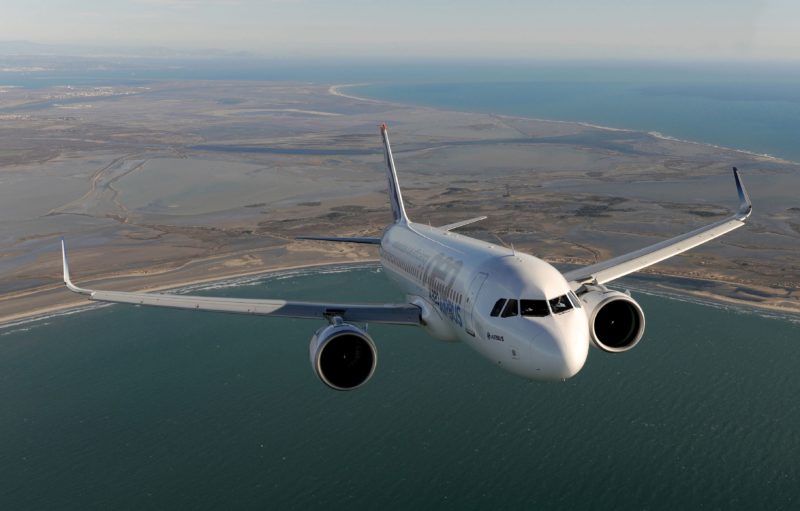
Today, with the A318, A319, A320, A321 and the NEO family, the program is highly regarded in the industry as one that brought Airbus from a small player to bringing Boeing to its knees with 737 development.
A330/A340
Development of the A330 and A340 sends us back to the 1970s when Airbus was still investigating additional potential with the A300.
Utilizing the same basic fuselage design, Airbus’ plans were to extend the A300, add turbofan engines with greater thrust and offer an airraft that was 25% more efficient than the McDonnell Douglas DC-10 and Lockheed L-1011 Tristar.
After extensive research and development, approval was granted and the A300B9 and A300B11 were launched, respectively becoming the A330 and A340.
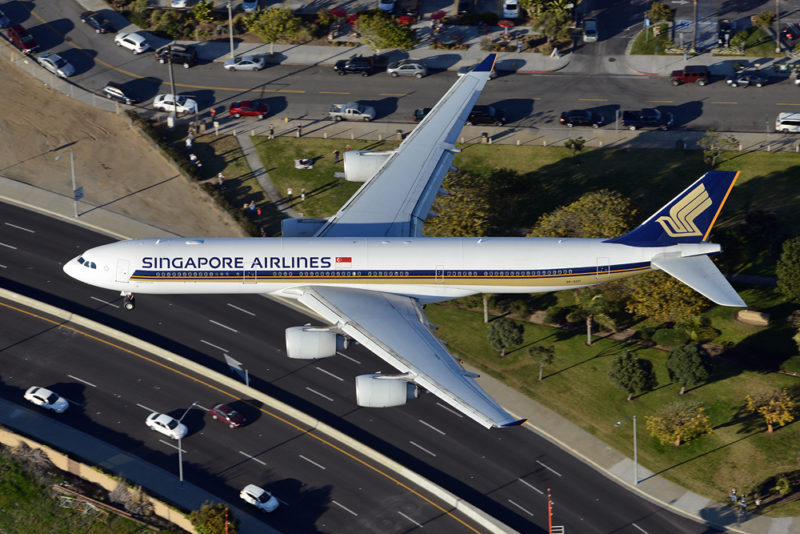
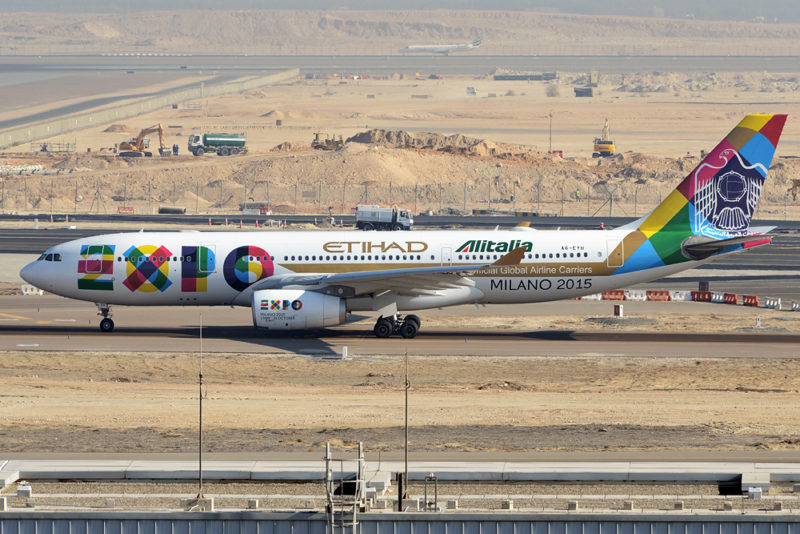
The A330 was the first Airbus to be powered by a set of Rolls-Royce engines, with the engine manufacturer committing to an all-new design exclusive for the aircraft, the Trent 700.
General Electric modified their CF6 engine to produce more thrust with less blades and Pratt and Whitney offered the PW4000 engine, giving airlines a wide variety of engine choices based on performance requirements.
The A340 faced an engine difference compared to the A330, with the option of CFM56 engines for the early models (A340-200, A340-300) and Rolls-Royce Trent 500 for the larger, improved A340-500 and A340-600.
This is where Airbus had to face facts. When Boeing entered the market with the twin-engine 777 and continually improved the type, they ended up selling 10 frames per one of the A340.
Despite this setback, Airbus pulled off a success story with the A330, managing to win the contest against the 767.
To this day, the A330 operates all over the world and is approaching the 2000th delivery. The success of the A330 has been received in such a positive manner by Airbus, the re-engined, re-winged A330neo was launched.
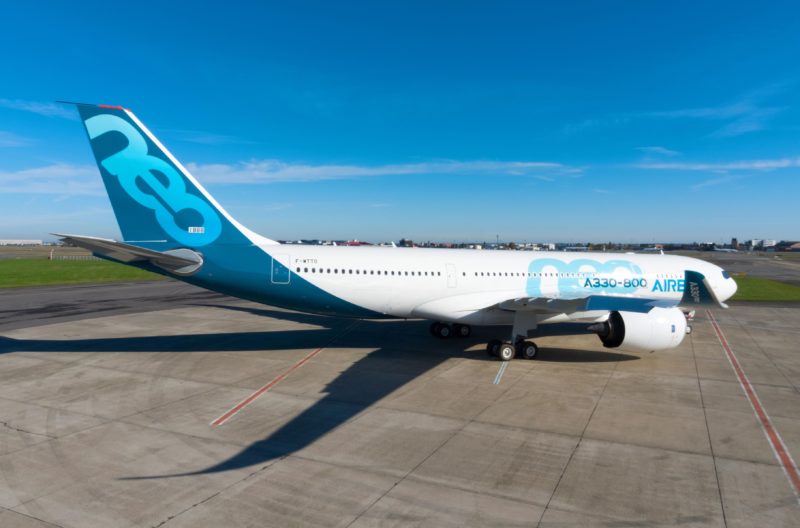
A380 Superjumbo
Arguably the boldest move by Airbus was the decision to bet on another four engine aircraft. One that would dwarf any other commercial jet near it and one that would receive the highest passenger satisfaction rating.
The A380 is the world’s largest passenger aircraft developed from years of hard work, billions of dollars and plenty of media attention. However, rather than being the top-seller Airbus was hoping for, the aircraft merely survived thanks to Emirates’ enormous commitment to the type.
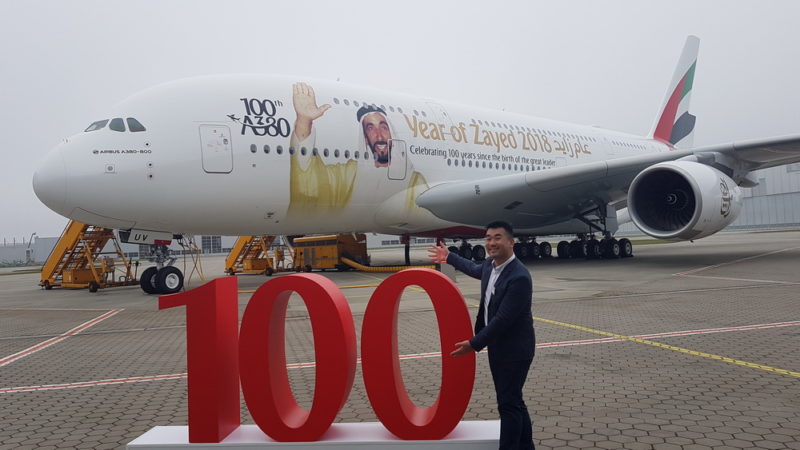
In the age where Airbus was focused on the hub and spoke model, Boeing excelled with their point-to-point network, using a small, ultra-efficient aircraft that’s resulted in a tremendous success for the company, the 787 Dreamliner.
Featuring two full-length passenger decks, an absolutely stunning wing and a cutting edge array of aircraft systems, the Airbus A380 may be expensive, however its proven to be an absolute workhorse on viable routes, a favorite for passengers and a pleasure to fly for pilots.
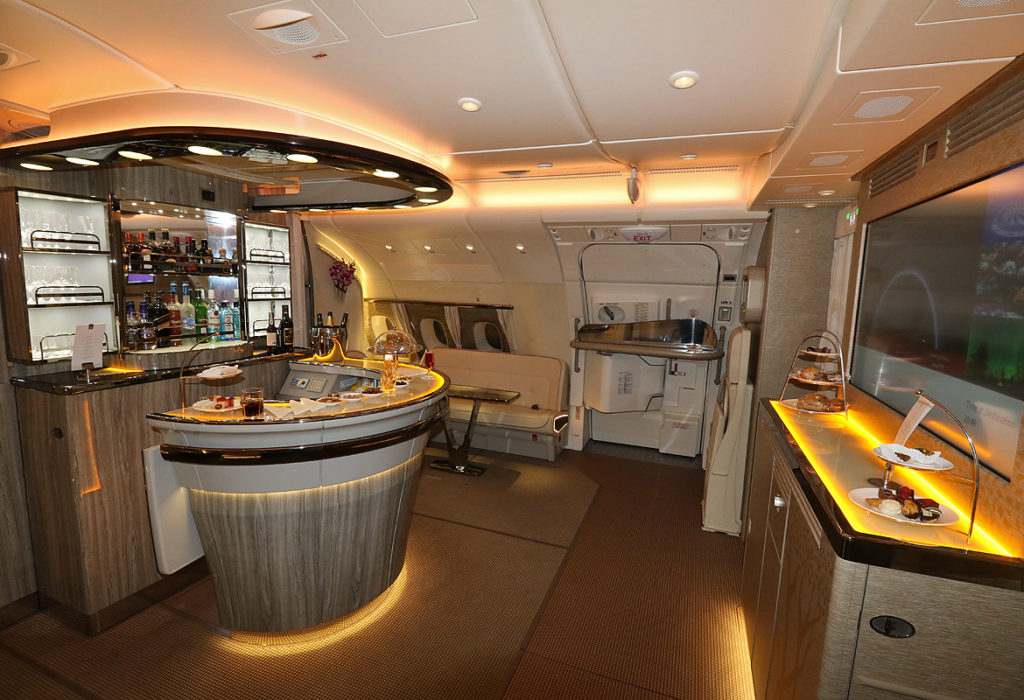
2021 will see the days of the A380 being Airbus’ flagship conclude, with production ceasing. This leads us to our final and latest Airbus member to become their company flagship.
A350 XWB
What started as a glorified A330, the Airbus A350 has now ended up as Airbus’ flagship aircraft, flying the longest route in the world and operating for a variety of airlines.
Built using an advanced lineup of composites and structural advancements, the A350 is the lightest and most efficient aircraft in its class, powered by two of the latest and most efficient turbofan engines from Rolls-Royce, the Trent XWB.
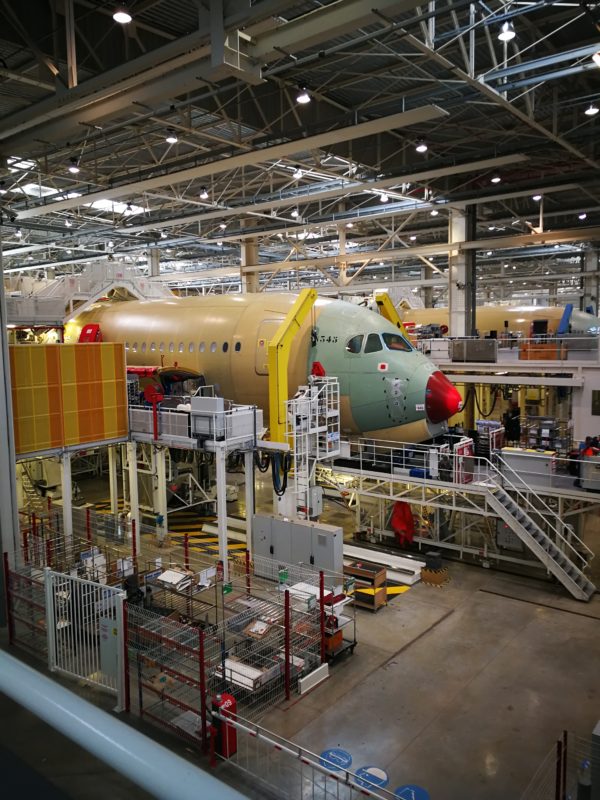
Benefiting from the latest production methods and the world of digitization, the A350 has performed beautifully for Airbus and airlines, with a 99.% operating reliability figure.
Carrying on the experience from the A380, the A350 is a technological marvel and is highly rated by passengers and crew members.
Although the aircraft is smaller than Boeing’s next flagship, the 777-9, the aircraft is only in its early stages, benefiting from a clean sheet design and a 45t lower weight at takeoff.
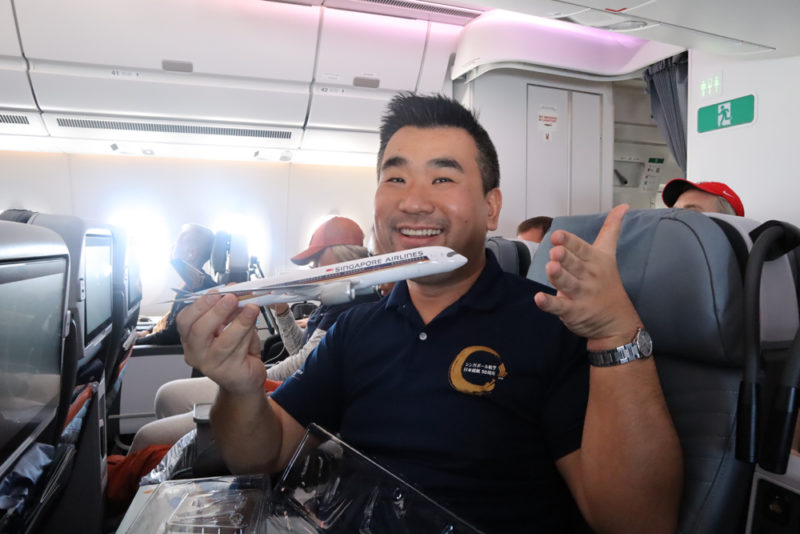
The future of the A350 is bright, with further developments available and airlines approaching the replacement phase for 777s and A330s.
For Airbus, the A350 has been “the star” and compliments the A380. As said during the 2019 Innovation Days, the A350 wouldn’t be where it is today without the Superjumbo.

Celebrating Together
Airbus is a perfect example of a cooperation with the dream to soar high and prove you can combine thoughts to create the aviation world a magical scene.
Over the last 50 years, competition for Airbus has been tough, sales have dipped up and down, unfortunate events have cut the industry and failure has been ready to pounce, however with good application of elbow grease, collaboration across Europe and the support of airlines, Airbus has pulled through.

You might say Boeing and Airbus are completely different worlds, you might assume they dislike each other, you might also have a strong preference for one or another. The important thing to remember is, without either of them, both wouldn’t be where they are today.
Here’s to another 50 years of Airbus and many more after that!


